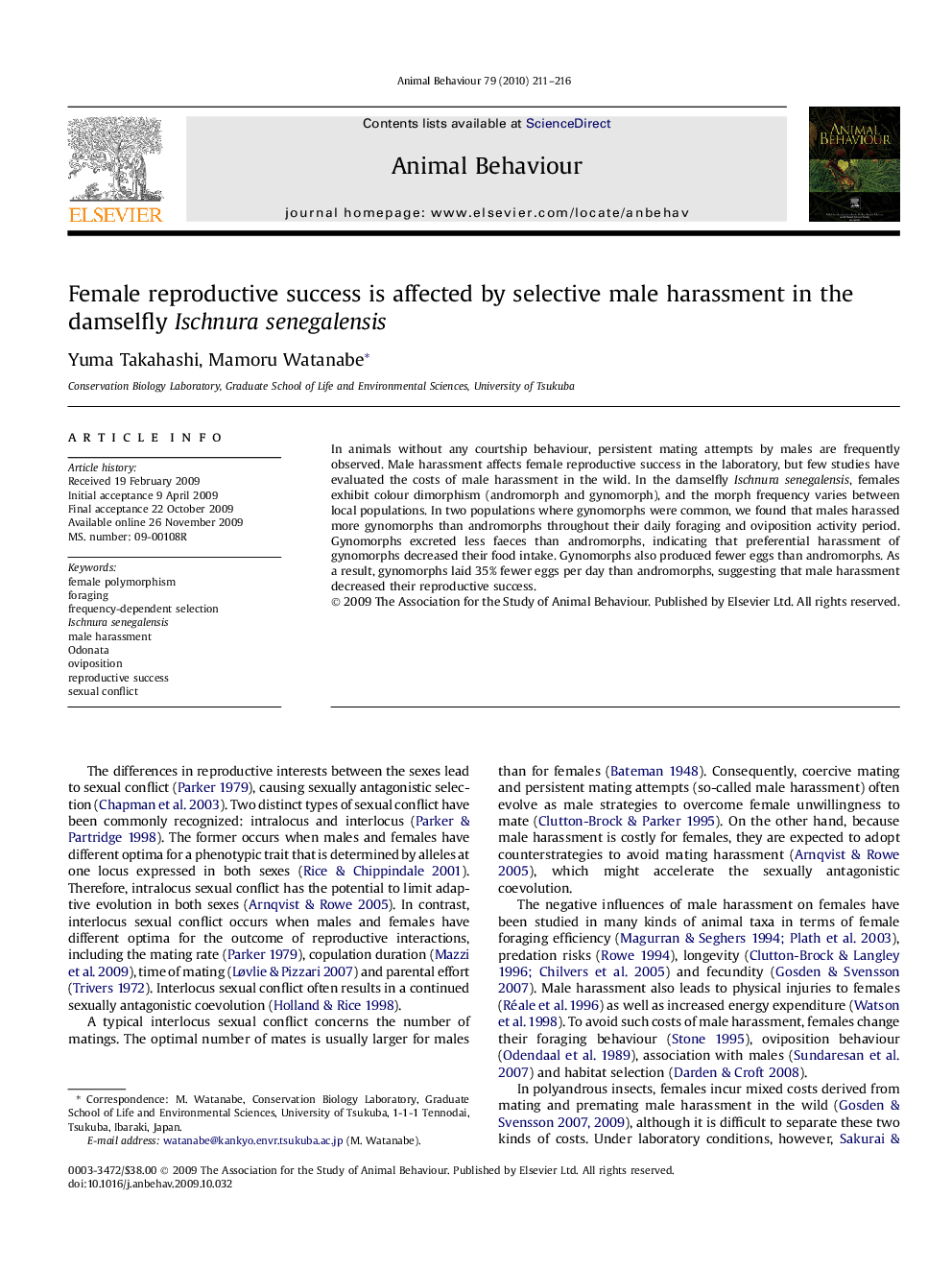| Article ID | Journal | Published Year | Pages | File Type |
|---|---|---|---|---|
| 2417723 | Animal Behaviour | 2010 | 6 Pages |
In animals without any courtship behaviour, persistent mating attempts by males are frequently observed. Male harassment affects female reproductive success in the laboratory, but few studies have evaluated the costs of male harassment in the wild. In the damselfly Ischnura senegalensis, females exhibit colour dimorphism (andromorph and gynomorph), and the morph frequency varies between local populations. In two populations where gynomorphs were common, we found that males harassed more gynomorphs than andromorphs throughout their daily foraging and oviposition activity period. Gynomorphs excreted less faeces than andromorphs, indicating that preferential harassment of gynomorphs decreased their food intake. Gynomorphs also produced fewer eggs than andromorphs. As a result, gynomorphs laid 35% fewer eggs per day than andromorphs, suggesting that male harassment decreased their reproductive success.
